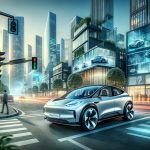Tesla has announced a strategic move to dramatically increase the number of Supercharger stations in New York City by the end of the year. The electric vehicle (EV) giant aims to install at least 100 new charging points throughout the city in an effort to support the growing number of Tesla drivers and to ease the current pressure on its charging infrastructure. This initiative highlights Tesla’s commitment to enhancing the convenience and accessibility of EV charging in urban environments.
The growth of the electric vehicle market in NYC has been observed over recent years, with several companies vying for dominance in the EV infrastructure space. Revel, a rideshare service that employs an EV fleet including Tesla Model Ys, has been actively working on expanding its charging network to accommodate its services. Revel’s efforts, parallel to Tesla’s, underscore the pressing demand for more robust EV charging solutions in densely populated cities, where space is at a premium and the urban landscape presents unique challenges.
Targeted Boroughs for Tesla’s Charging Expansion
Tesla’s expansion plan will focus on three of the five boroughs: Brooklyn, Queens, and Staten Island, each chosen for their unique geographic and demographic characteristics. Brooklyn and Queens, due to their connectivity, and Staten Island because of its more isolated location, are deemed as areas that will benefit significantly from the increased number of Superchargers. However, Manhattan and the Bronx are currently excluded from this rollout due to the high cost and scarcity of real estate, which poses a significant barrier to infrastructure development.
Charging Infrastructure Challenges in Urban Areas
The expansion of EV infrastructure in urban areas like NYC is fraught with challenges, primarily due to the scarcity of available space. Real estate constraints make it difficult for companies to identify suitable locations for charging stations, particularly in the densely populated and heavily trafficked areas of Manhattan. Tesla’s own Supercharger stations in the city have experienced congestion, prompting the company to introduce congestion fees to mitigate the issue. The need for innovative solutions to these infrastructure challenges is becoming increasingly critical as the number of EVs on the roads continues to rise.
The increasing demand for electric vehicles and the corresponding need for more charging options have sparked discussions in related areas of sustainability. For instance, a recent article titled “The Push for More Electric Buses and the Future of City Transport” on CleanTechnica delves into the efforts to electrify public transportation, a move that complements the expansion of private EV charging networks. Another piece, “Building Smart Cities: How EVs are Driving Urban Planning” on Engadget, looks at how the integration of EV infrastructure is influencing the design and functionality of modern urban spaces.
Finding Solutions for Manhattan and Bronx Charging
While Tesla progresses in addressing the EV charging demands of Brooklyn, Queens, and Staten Island, the question of how to overcome the barriers to infrastructure development in Manhattan and the Bronx remains. Revel’s experience in Manhattan highlights the difficulty of finding adequate space for chargers, a challenge Tesla also faces as it seeks to support the growing number of EV drivers in these areas.
Useful information for the reader
- Tesla plans to add 100+ Superchargers in NYC, excluding Manhattan and Bronx.
- Real estate scarcity poses a challenge for EV infrastructure expansion.
- Other cities can learn from NYC’s EV infrastructure development efforts.
Tesla’s ambitious plan to expand its Supercharger network in New York City is a strategic step towards accommodating the surge in EV usage and addressing the current charging station congestion. While the initiative promises to enhance the EV experience for many drivers, the challenges in Manhattan and the Bronx highlight a broader issue that urban centers worldwide face as they transition to sustainable transportation. Future developments in EV infrastructure will likely require innovative approaches to urban planning and real estate utilization to create a seamless charging experience for all EV drivers.










